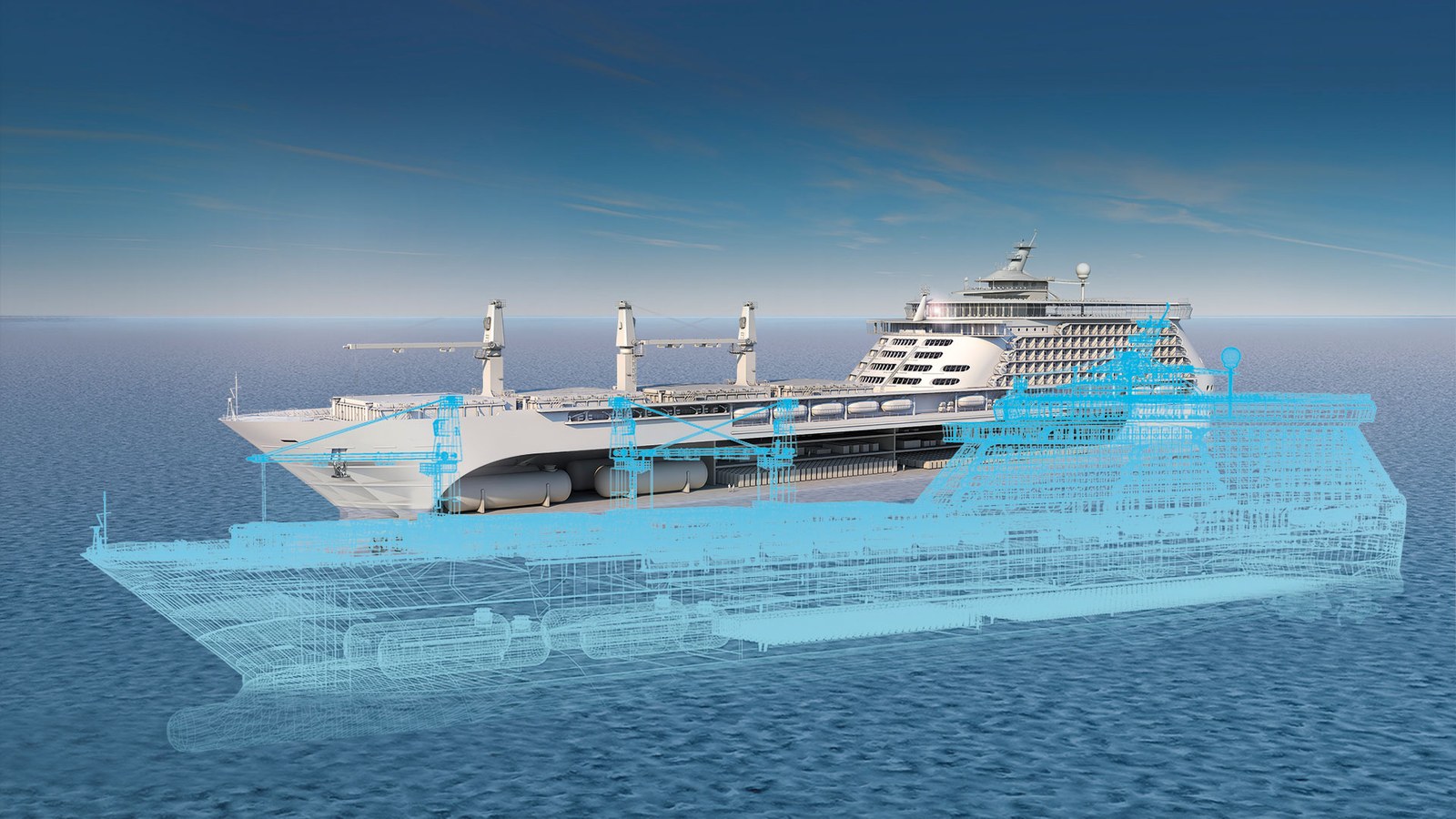DLR opens Institute of Maritime Energy Systems in Geesthacht



- In future, ships should no longer produce emissions.
- Floating demonstrator planned to test alternative propulsion systems and components.
- 'Digital twin' supplements tests in borderline areas.
- Focus: Energy, transport, digitalisation
Ships transport over 80 percent of the global freight volume. Most ships use heavy oil as fuel. In doing so, they generate almost three percent of global carbon dioxide emissions. Cruise ships also contribute to climate-damaging carbon dioxide emissions. This must change. The new Institute of Maritime Energy Systems of the German Aerospace Center (Deutsches Zentrum für Luft- und Raumfahrt; DLR) is developing technologies for decarbonising shipping – for all types of ships. The institute in Geesthacht, Schleswig-Holstein, was inaugurated at a virtual event on 28 May 2021.
"At our new institute in Geesthacht, the course is set for the maritime transport of the future. New developments ought to generate as few emissions as possible and have a closed-loop material cycle," explains Anke Kaysser-Pyzalla, Chair of the DLR Executive Board. "The entire infrastructure system is being considered, from the port to energy generation on board the ship. Thus, in addition to exploring the use of alternative fuels and many other things, the Institute will investigate hydrogen as a means of energy provision and propulsion."
With this new institute, DLR is expanding its research on shipping. In Geesthacht, ocean liners, cruise ships, smaller inland waterway vessels and yachts will all be considered equally and in a holistic manner. The work will motivate shipyards, ship outfitters, ship owners and port operators to make shipping more environmentally friendly.
"Sea freight, cruise and ferry traffic are increasing. More and more, the focus is on how renewable energies can be used sensibly and efficiently by ships and how emissions can be reduced to zero," said Daniel Günther, Minister President for Schleswig-Holstein, in his video message. "In Geesthacht, researchers will develop answers to some of the most pressing questions facing our economy and environment. That is why the state government is providing 15 million euros to support the establishment of the Institute and assuming a portion of the annual funding. We look forward to the work carried out by DLR and welcome the institution to Schleswig-Holstein."
Two hundred and fifty employees in four departments in the long term
The DLR institute is located in the Geesthachter Innovation and Technology Centre (GITZ) on the premises of Helmholtz-Zentrum Hereon. Currently, 13 employees are building up the Institute's infrastructure. Test environments for container-based energy systems are being set up in a hall. In the long term, the Institute will employ 250 people in its four departments: Energy Converters and Systems, Energy Infrastructures, Virtual Ship and System Demonstration.
"In the maritime transport sector, we want to become emission-free well before 2050. The goal of the German Federal Government is for the first emission-free cruise ship 'Made in Germany' to become a reality as early as 2030. If this can be achieved with innovative solutions and technologies, the foundation will have been laid for the entire fleet to become emission-free, regardless of the type of ship. On the way there, however, it is first necessary to replace heavy fuel oil as an energy source in order to avoid the associated emissions. For this, solutions are also needed for retrofitting ships that are already in service. In all of this, the new DLR Institute of Maritime Energy Systems will make an important, application-oriented contribution to implementing the ambitious climate goals of the German government in the transport sector," says Norbert Brackmann, the Federal Government Coordinator for the Maritime Industry.
The Institute of Maritime Energy Systems intends to have a motor ship built on which various alternative propulsion systems will be tested. The floating demonstrator will advance the development of systems and components for inland and maritime shipping to the stage at which they can be used worldwide in the near future. A virtual ship known as a 'digital twin' will complement the research. With it, tests can be carried out safely and efficiently using simulations. For example, the operating conditions in extreme climates can be anticipated. The digital twin makes it possible to conduct safe tests in threshold conditions and reduces the number of real tests required. Furthermore, it facilitates the scaling of the systems to large container ships as well as to smaller inland vessels or other types of ships.
